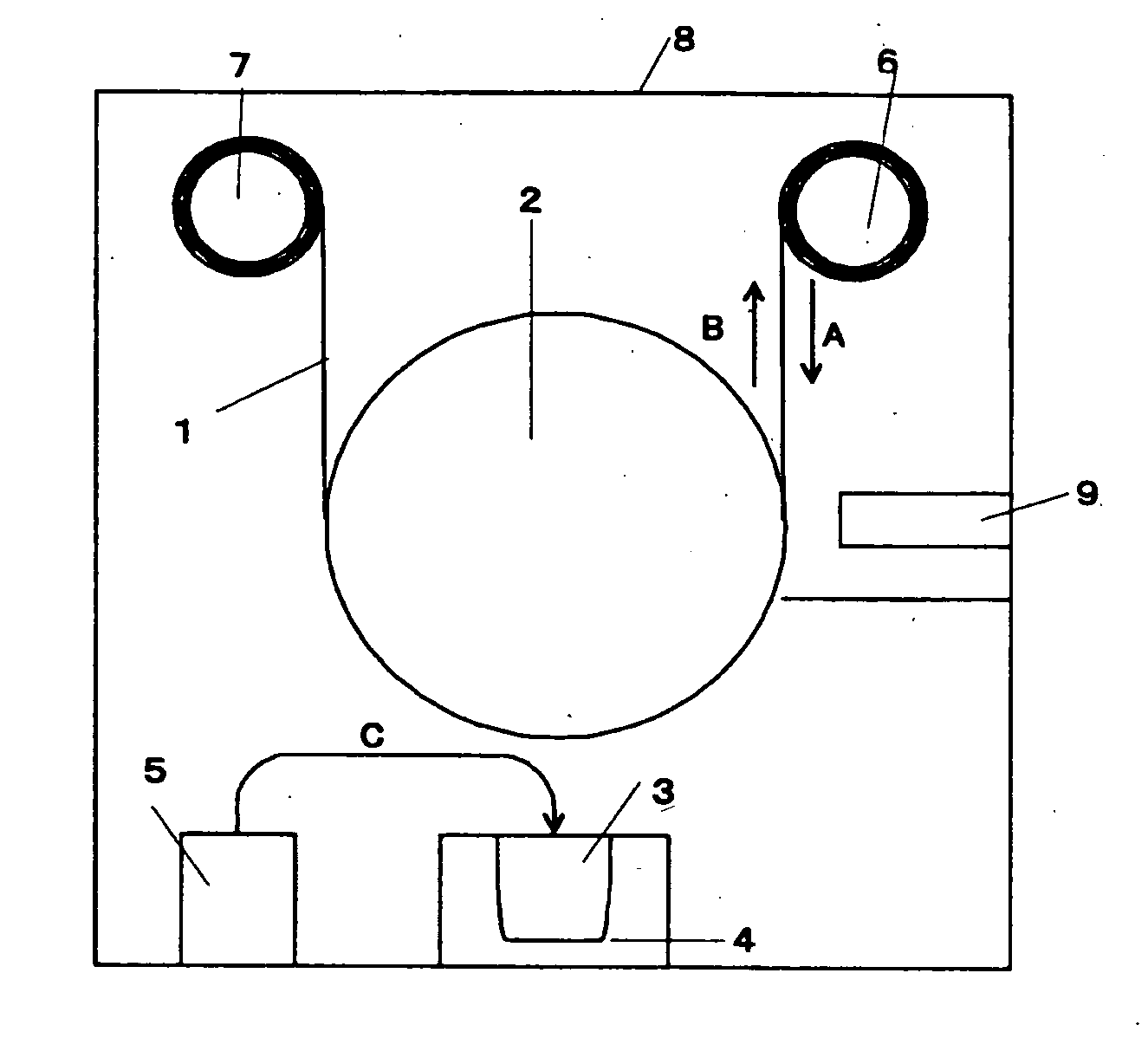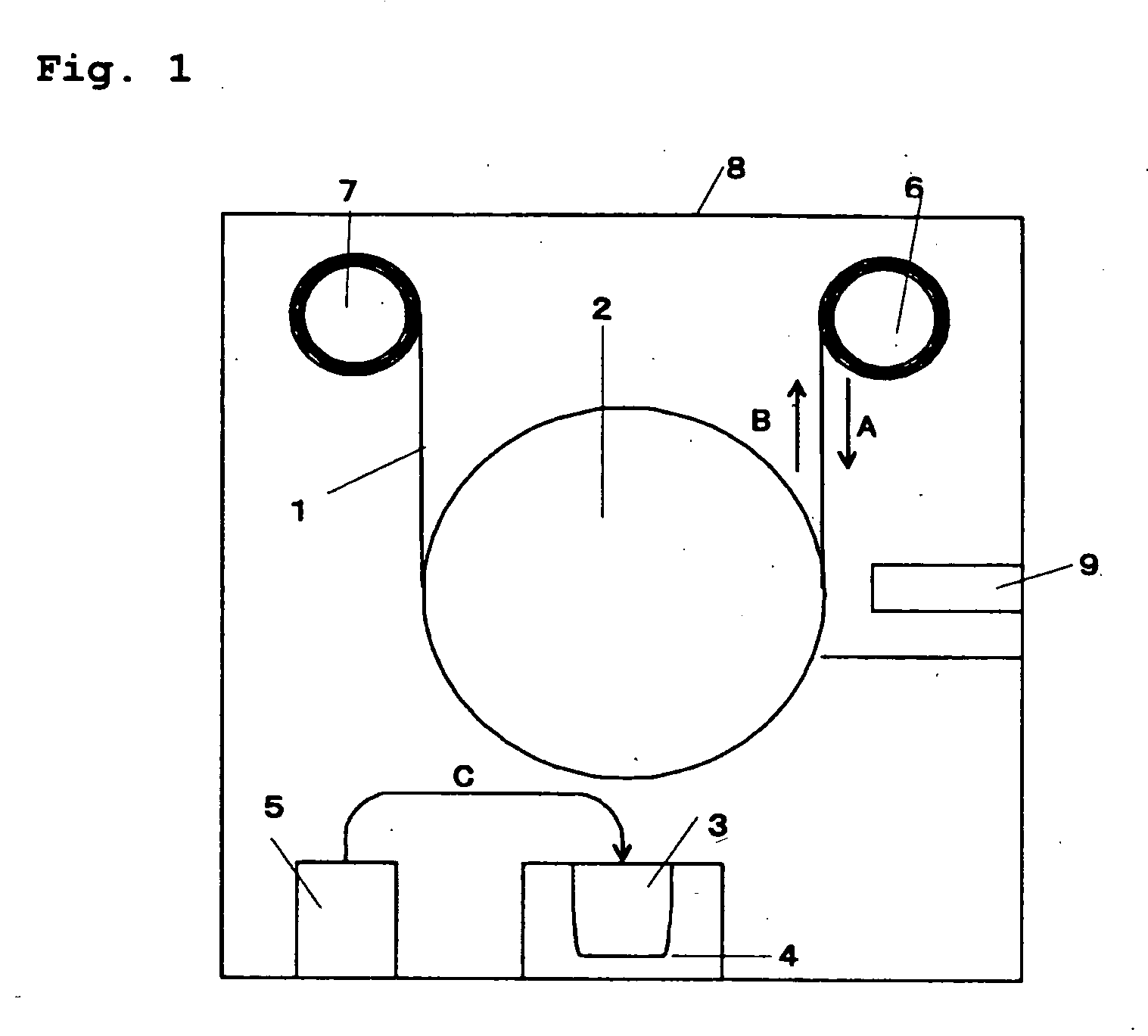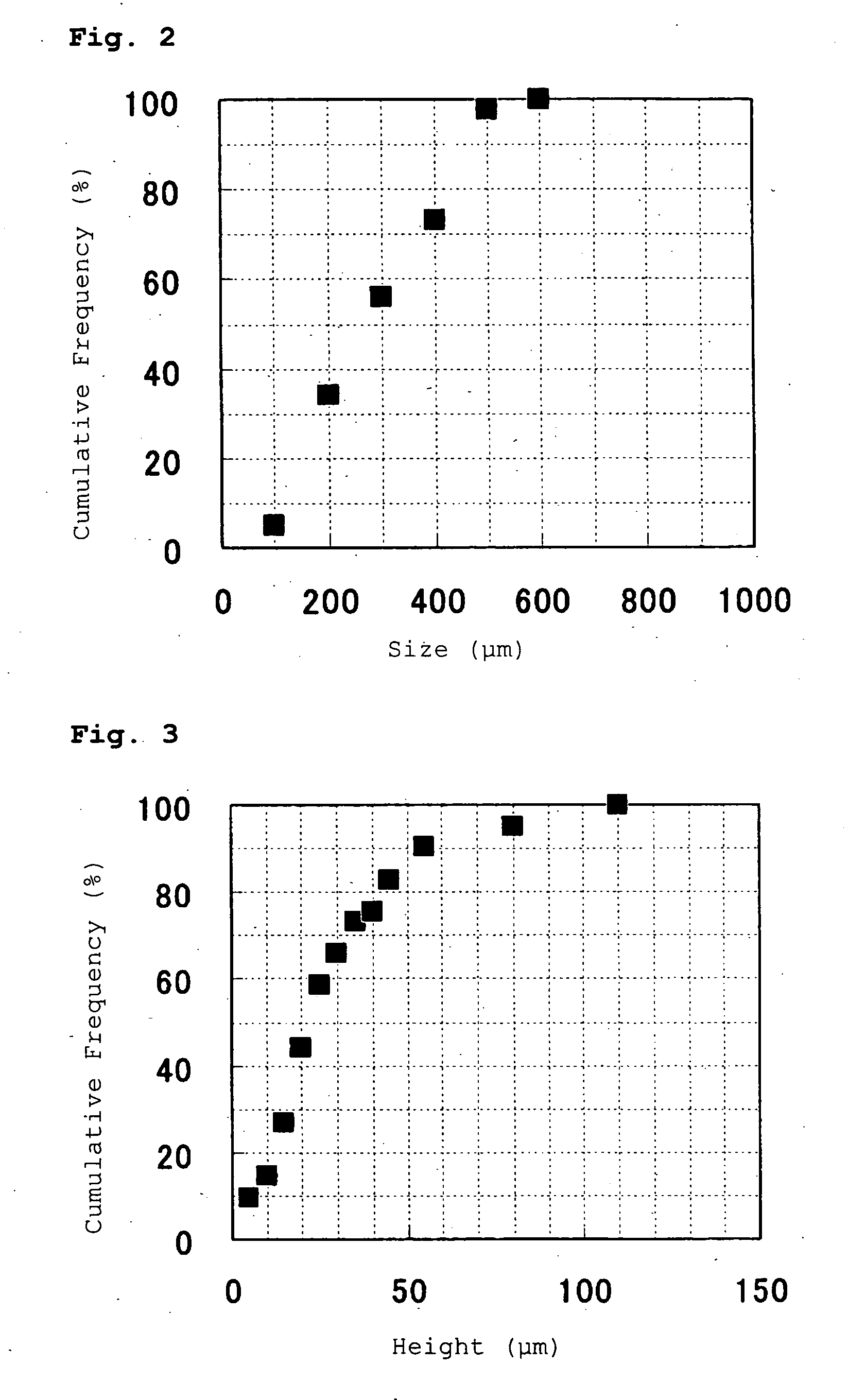Method of manufacturing electrode for lithium secondry batteries
a manufacturing method and lithium secondry technology, applied in the manufacturing process of electrodes, cell components, shaping/stretching tubular fabrics, etc., can solve the problems of short-circuit failure of the battery, difficult to form a flat and smooth surface, and formation of protrusions on the electrode surface, so as to reduce the failure of products and increase the productivity of manufacturing the battery using the electrodes.
- Summary
- Abstract
- Description
- Claims
- Application Information
AI Technical Summary
Benefits of technology
Problems solved by technology
Method used
Image
Examples
embodiments
[0024] Preparation of Electrode
[0025] Copper was deposited on surfaces of a rolled copper foil (thickness 26 mm) by an electrolytic process to roughen the surfaces, and the surface-roughed copper foil was used as the current collector. The surfaces of the current collector had an arithmetical mean roughness Ra of 0.5 μm. Arithmetical mean roughness Ra is defined in Japanese Industrial Standard (JIS) B 0601, and it can be measured by a contact probe profilometer. The use of the surface-roughed copper foil can prevent a silicon thin film from peeling off from the current collector. Such peeling occurs due to the film stress of the silicon thin film or the stress originating from the expansion / shrinkage in volume of the silicon thin film during charge / discharge. On the current collector thus prepared, a silicon thin film was deposited in the following manner, using the thin-film deposition system as shown in FIG. 1.
[0026] The current collector 1 thus prepared was wound around the rol...
PUM
| Property | Measurement | Unit |
|---|---|---|
| Height | aaaaa | aaaaa |
| Volume | aaaaa | aaaaa |
| Volume | aaaaa | aaaaa |
Abstract
Description
Claims
Application Information
 Login to View More
Login to View More - R&D
- Intellectual Property
- Life Sciences
- Materials
- Tech Scout
- Unparalleled Data Quality
- Higher Quality Content
- 60% Fewer Hallucinations
Browse by: Latest US Patents, China's latest patents, Technical Efficacy Thesaurus, Application Domain, Technology Topic, Popular Technical Reports.
© 2025 PatSnap. All rights reserved.Legal|Privacy policy|Modern Slavery Act Transparency Statement|Sitemap|About US| Contact US: help@patsnap.com



